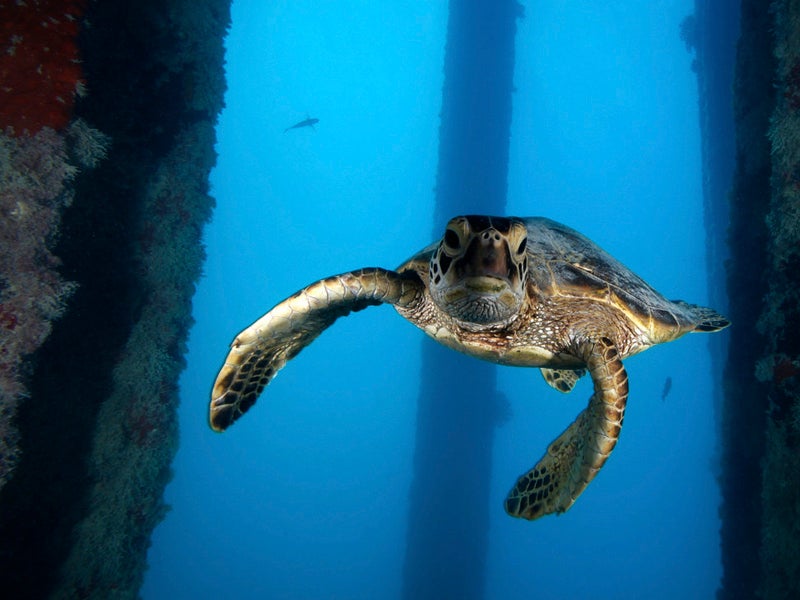Agency Takes Aim at America’s Largest National Monument
The Western Pacific Fisheries Management Council is acting far outside its mandate by asking President Trump to allow longline fishing in Hawai‘i’s Papahānaumokuākea Marine National Monument.

This page was published 8 years ago. Find the latest on Earthjustice’s work.
It appears America’s national monuments are under attack, from the Atlantic to the Pacific. Leaders of the Western Pacific Fisheries Management Council, or Wespac, vociferously opposed expanding the Papahānaumokuākea Marine National Monument in Hawai‘i last year and are now asking the Trump administration to remove restrictions on commercial fishing in the monument area. Their actions are grossly inappropriate and possibly illegal.
Building on President Bill Clinton’s 2000 executive order creating the marine reserve, in 2006 President George W. Bush formally established the Papahānaumokuākea Marine National Monument. President Barack Obama expanded the monument in 2016 at the behest of Native Hawaiians, scientists, conservationists, small-boat fishermen and politicians, including U.S. Senator Brian Schatz. At more than 580,000 square miles, the monument is now the largest protected conservation area in the nation.
Hawai‘i’s governor supported the expansion, which was approved only after the Obama administration held multiple meetings on the islands with interested constituents—including the longline fishing industry—and held two public meetings, on Oahu and Kaua‘i, to take public comments. Grassroots supporters also offered more than 135 community meetings across the state, on every island, to discuss the monument expansion. As a result of this dialogue, the final size of the expanded monument was changed to ensure access to fishing grounds used by small-boat fishermen.
The protected area includes biocultural resources sacred to Native Hawaiians and important for their traditional activities, such as long-distance voyaging and wayfinding. It’s where Native Hawaiians believe all life began and where spirits return after death. Obama’s proclamation of the expansion named the Office of Hawaiian Affairs as a co-trustee of the monument, which gave native Hawaiians some say over the area’s management.
Papahānaumokuākea also encompasses extensive coral reefs supporting 7,000 marine species, as well as important habitat for the threatened green sea turtle, the endangered Hawaiian monk seal, 22 species of seabirds and countless other creatures yet to be discovered. It is likewise rich in historic artifacts, from the wrecks of whaling ships to downed aircraft from World War II’s Battle of Midway, the critical turning point in the war in the Pacific. A UNESCO World Heritage site, the monument has also been designated a Particularly Sensitive Sea Area by the International Maritime Organization.
Papahānaumokuākea encompasses extensive coral reefs supporting 7,000 marine species, as well as important habitat for the threatened green sea turtle, the endangered Hawaiian monk seal, 22 species of seabirds and countless other creatures yet to be discovered.
Commercial longline fishermen don’t like the monument, claiming that it restricts their fishing area. But Hawai‘i’s longliners have no trouble reaching their annual bigeye tuna fishing quota; last year, it took just seven months to reach the quota. In order to keep fishing, fishermen simply buy other regions’ quotas. In recent years, longliners have caught only about five percent of their total catch in the waters of the expanded monument.
Despite the abundance of fish outside the monument area, Wespac leadership has complained about the expansion directly to President Donald Trump. Trump or the commercial fishing industry may challenge the entire monument designation, try to roll back the monument expansion or lift the restriction on commercial fishing in the monument area. Earthjustice intends to oppose any such efforts in court. Clearly, Wespac hopes to maximize longliners’ private profits at the expense of healthy ecosystems.
Trump or the commercial fishing industry may challenge the entire monument designation, try to roll back the monument expansion or lift the restriction on commercial fishing in the monument area.
This is not Wespac’s role. Council members are trustees of the nation’s fishery resources who take an oath to “conserve and manage the living marine resources of the United States of America.” They are supposed to gather scientific data and help develop and implement ecosystem-based fishery management plans, not shape federal policy, fight national monument designations or lobby to expand Wespac turf. In fact, the council’s overzealous pursuit of longliner profits may violate laws against using federal funds for lobbying.
Now that an anti-environment presidential administration has come to power, Wespac is inappropriately trying to influence policy at the expense of unique and extraordinary natural and cultural resources. Wespac should remember what its job is. It should be resisting efforts by the Trump administration to erode important national monument protections, not encouraging their destruction.
Additional reporting was provided by Marjorie Ziegler and Rick Gaffney. Ziegler is executive director of the nonprofit Conservation Council for Hawai‘i; Gaffney has served on Wespac and other federal advisory panels.
A version of this op-ed originally appeared in the Honolulu Star Advertiser.
Established in 1988, Earthjustice's Mid-Pacific Office, located in Honolulu, Hawaiʻi, works on a broad range of environmental and community health issues, including to ensure water is a public trust and to achieve a cleaner energy future.